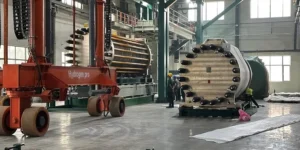A new gold rush | There are now 40 companies searching for natural hydrogen deposits — up from ten in 2020

At the end of last year, there were 40 companies searching for natural hydrogen deposits — up from just ten in 2020, according to Norway-based Rystad Energy.
Exploration is now under way in eight countries, the analyst says — Australia, the US, Spain, France, South Korea, Canada, Colombia and Albania — but no commercially exploitable deposits have been found anywhere in the world, aside from at a small well in Mali, west Africa, that produces about five tonnes a year for electricity production in a nearby village.
But the prospectors in this new gold rush are pinning their hopes on the expectation that any reserves of natural hydrogen — also known as white, gold or geologic H2 — would have significant cost advantages over hydrogen produced from renewable energy or fossil fuels.
Rystad says that grey hydrogen derived from fossil fuels costs less than $2/kg on average and green H2 is currently three times more expensive.
However, it expects that natural hydrogen could be extracted and purified at a cost of about $1/kg — and the only current producer of geologic H2, Hydroma, which operates the Mali well, can produce it an estimated cost of $0.50/kg.
Indeed, the potential is so large that US-based natural-hydrogen explorer Koloma recently raised $245m in private finance.
Article continues below the advert
At the same time, natural hydrogen in the US “could be eligible” for the hydrogen production tax credit (PTC) of up to $3/kg, depending on emissions intensity, according to Rystad.
“At a hydrogen content of 85% and minimal methane contamination, the carbon intensity is around 0.4kg carbon dioxide equivalent (CO2e) per kg [of] hydrogen gas — including embodied emissions and hydrogen emissions, says the Norwegian analyst, pointing out that the PTC’s top rate of $3/kg is for projects that emit less than 0.45kgCO2e/kgH2.
However, it is not clear if natural hydrogen would actually be eligible for tax credits, and the rules and regulations surrounding their disbursement are yet to be finalised.
A company called Gold Hydrogen recently found hydrogen concentrations of up to 86% in South Australia during exploratory drilling in South Australia.
“Although still in its infancy with lots of uncertainty, white hydrogen has the potential to be a gamechanger for the clean hydrogen sector as an affordable, clean natural resource, thereby shifting the role of hydrogen from an energy carrier to part of the primary energy supply,” said Rystad’s head of hydrogen research Minh Khoi Le.
“However, the actual size of the reserves is still unclear, and the transportation and distribution challenges of hydrogen remain.”
There are six known ways in which hydrogen is produced naturally:
Serpentinisation
In which the mineral olivine located in mid-ocean ridges or ophiolites (a geological formation where sections of the Earth’s mantle rise above sea level) is weathered to form hydrogen-rich fluids. This has been seen in the Semail ophiolite, in the Hajar Mountains of Oman. Under pressure and high temperatures, water can react with these iron-rich rocks to produce H2.
Radiolysis of water
Radioactive elements in the Earth’s crust — for example in crystalline basement rocks with high content of uranium, thorium or potassium — decompose water molecules trapped in causing a hydrogen pocket, as happened in South Australia.
Deep degassing
In which “primary” hydrogen (a single hydrogen atom attached to a single carbon atom) escapes from deep within the Earth’s crust. This has been seen in Nebraska, in the US.
Iron reduction and sulphur oxidation
Ferric iron in a black smoker (a subsea hydrothermal vent formed from iron sulphide deposits) is reduced to ferrous iron and hydrogen sulphides.
Thermal decomposition of organic matter
In which ammonium compounds located in deep sendiments decompose under high temperatures to form hydrogen and nitrogen, for example in hydrogen-nitrogen gas seeps in Oman.
Biological activity
Hydrogen is produced by microbes living in the Earth’s crusts, usually co-existing with hydrogen-consuming microbes and found via sediment or aquifers. This has been observed in the coal beds of the Powder River Basin in Montana, US.
Source: Rystad Energy





